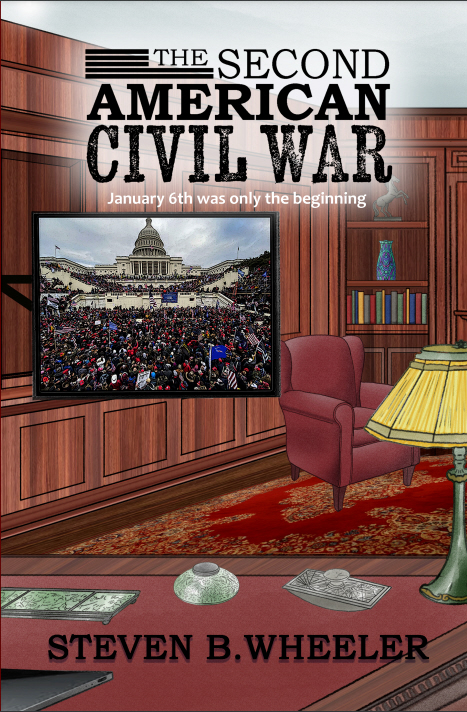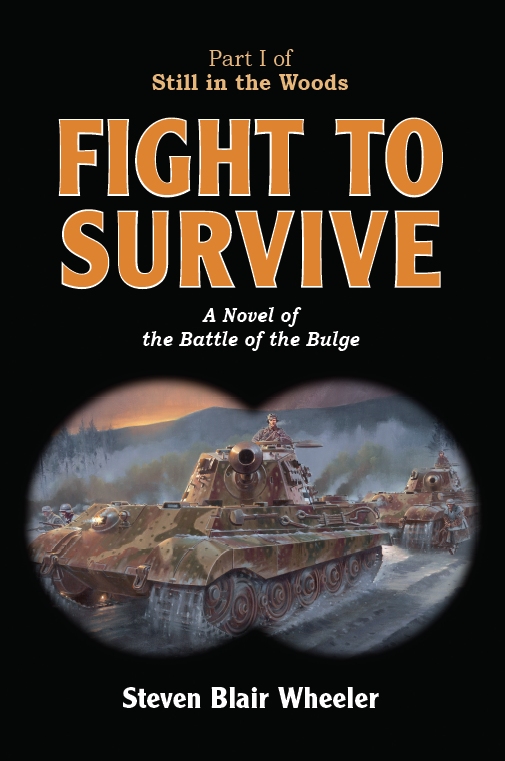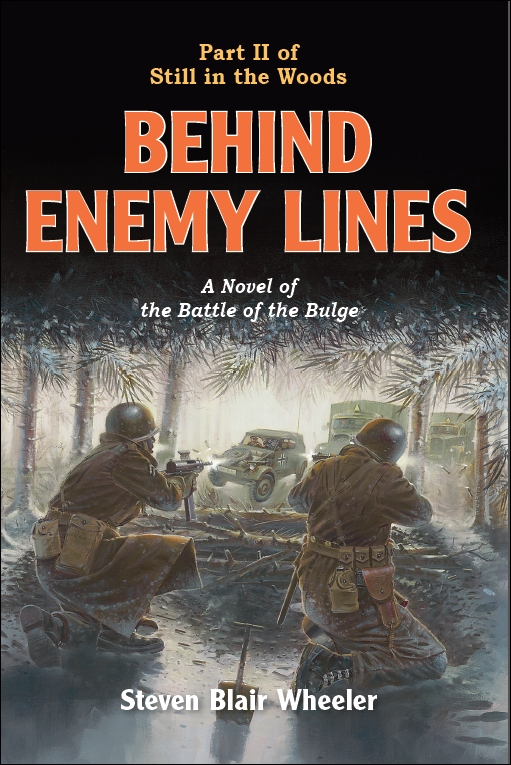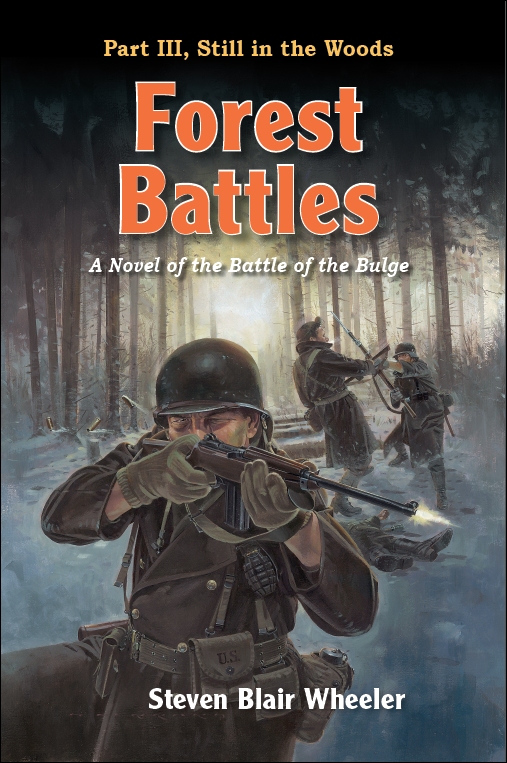On the Radar
From self-publishingland
Like everybody else in Oregon lately, I’ve been reveling in the brilliant, sunny, warm weather after a particularly cold and wet late-winter onslaught. Soon, I’ll be spreading bark dust.
These past two weeks, I’ve been working to publish a paperback edition of The Second American Civil War. I’m so close that I’ve ordered a proof copy to inspect before I make it available. It’s being published via Amazon.
I’m new to publishing through Amazon, so there has been a learning curve. I’m still on that curve, but I feel like I’m making good progress.
That’s important, because I’ll also publish the rest of my novels through Kindle Direct Publishing for several reasons. One big reason is I plan to fire Lightning Source, which is the outfit I used to publish my Still in the Woods series. Frankly, I’m fed up with the lousy customer service. It’s a huge red flag when an outfit does not have a phone number for customer support. Unsurprisingly, it can take two weeks -14 days- to get a question answered. Typically, someone gets back to you sooner than that, but they don’t answer the question you asked, or give you wrong information. It’s pathetic. It’s no way to run a business. Who needs a partner like that? Fired!
Self-publishing is enough of a challenge with a helpful publishing partner. I give KDP much higher marks because their processes are fully explained and the user interface is much more sensible.
For anyone who is contemplating self-publishing, do yourself a huge favor and do an internet search for the best self-publishing outfits. You’ll see my evaluation above is not in the minority.
If you are contemplating self-publishing, so understandable given how risk-averse the publishing industry is, I can try to answer a question or point you to useful information. The bottom line is: be prepared to start a small business that will impact on your writing time at least for several months as you get up to speed.
An Interview with SBW
What is the greatest joy of writing for you?
Writing is my art, my creative outlet. I enjoy discovering a story and the characters within it. A writer’s imagination is his gift to share with readers. When that gift resonates with people and is accepted and appreciated, it’s a wonderful feeling of validation and a fine encouragement to continue writing.
Writing is story telling, and I love a great story, well-crafted and well written. When a writer achieves those goals, he or she is a fine practitioner of the writing art form. Any artist aspires to perfecting their art to the best of their ability.
It’s so great to have in your life something that calls for your best efforts and always affords room to grow and improve. It’s like a violinist who masters her techniques to take on the wonderful challenge of a beautiful and difficult piece of music.
And writing always allows the author to explore subjects and learn new things that are needed to tell a story. That is part of what makes writing ever-fresh.
What are you working on next?
My latest novel, The Second American Civil War, relates events that occurred just after the 2020 national election. To avoid spoilers, I’ll just say that the end of the shooting war did not fully resolve underlying issues that caused it. So, just like the actual Civil War that ended in 1865, the second civil war would usher in the need for a new Reconstruction to create, in Abraham Lincoln’s words, “a more perfect union.” What would US democracy look like after a civil war in which the divide in the nation is not geographic as much as demographic?
How can the nation reunite in the face of a significant minority who ascribe to an alternate universe of facts?
What should happen to those who incited insurrection? How can they be readmitted as citizens in good standing?
So the challenge is to try to look ahead a couple of years to tell that story in the near-future.
Who are your favorite authors?
My most favorite author is Patrick O’Brian who wrote the wonderful Aubrey/Maturin series. I’ve re-read the entire 20 novels many times and never tire of them. O’Brian’s deep knowledge of the Royal Navy and British society during the Napoleonic wars, brings that era and his characters into vivid life. His insights into the human condition animate the stories in rich and satisfying ways. And his descriptions of sailing and life at sea in a sailing ship, particularly a Royal Navy warship, are often poetic, at times harrowing, pulse-quickening thrilling, and poignant.
I’ve also enjoyed many of Elmore Leonard’s novels as fun summer reads. “Rum Punch” was made into the great movie Jackie Brown, and that was a case where the movie almost topped the novel. The same happened for “Get Shorty.”
I have many others, but for now I’ll just mention Mark Helprin who wrote The Oceans and the Stars”, which is a marvelous tale of modern US naval action.
What is your writing process?
It depends.
I write poetry with pencil and paper so I can work over the meter as needs be. I find I’m most amenable to poetry when I’m relaxed and inspired.
When I write a short story, I typically have the idea and just start typing up the draft. I complete it, then let it sit for a while, a day or three. Then print it and read it aloud, and revise as the need arises. By the way, I detest the arbitrary limits on length imposed by magazines and contests.
For a novel, I work up an outline to visualize the story and character arcs. This also enables me to identify where I need to do research for locations, technical stuff, historical details that may enter in, etc. I spend days and weeks on this stage, also making notes for scenes. Sometimes, I draft up a critical scene at this stage, which is fun for me to get a sneak peek at the characters.
When I feel good about the outline, I’m generally champing at the bit to get writing and I set to it.
I write in the morning when I’m rested and have my tea and milk chocolate at hand. I sometimes work into the afternoon, and may put in some evening time, but my main effort is in the morning.
When I have a complete draft. I print it out (double-spaced) and read it aloud. I have a pencil at hand as I do this to cycle of edits. I do the revisions, print and read it aloud again. Rinse and repeat as needed.
How do you approach cover design?
The cover depicts a key scene in the story that dramatically exposes the central conflict. It must be visually appealing on multiple levels which are appreciated intuitively at first glance, but more fully as the reader gets into the story.
Cover design by the author is one of the best parts of self-publishing where the author has control of such design elements and decisions. Unless, of course, the author is not gifted visually. Then a talented designer can suggest brilliant cover ideas along the lines stated above. For the “Still in the Woods” series, I worked with an internationally renowned military illustrator in the UK. I was so pleased with his work that I have framed prints in my study.
Why did you become an indie author?
Why, indeed?
After trying for two years to attract a literary agent to gain a publisher the traditional way for The Seconds American Civil War, and either getting ignored or rejected every time, it became clear that if I was going to get this novel and it’s messages about our divided America before the public this election year, I needed to take on the publishing role.
The silver lining about my being retired, aside from my excellent health, is that I have plenty of time to tackle what is in fact a new job.
When you’re not writing, how do you spend your time?
I like to explore, and living in Oregon I’m blessed with many places to discover near and far. If you check my website stevenblairwheeler.com, you can enjoy one of my travelogues describing an adventure in the Owyhee canyonlands.
I love riding my bicycle. I’m not into the electric bike thing. But maybe if I get to be geezerly, I’ll have to try that. I hit the gym regularly to hold off that time.
My bicycle is my second car. I enjoy running local errands to reduce money spent on Big Oil and get fun exercise year-round. One of my favorite bike destinations is the minor league ballpark. I can cycle there in about half an hour on a lovely spring or summer evening and root for the Hillsboro Hops.
I also adore reading, of course. I typically have one or more books going. Fiction and history, mostly. Some economic and political stuff, throw in a bit of science sometimes. I dig spending time with my young adults and my friends. Hiking is a favored activity. My son and I have summited South Sister and Mt. St. Helens. I think I have a couple more peaks in me.
Describe your desk
My desk dates from the 1950’s and is rather large. I refinished the top some years ago and one day may need to do so again. I have a 21″ monitor with my desktop tower to the right and my printer on a stand to the left. A desk lamp stands by the printer reaching over the monitor. In front of the tower on the right is a pewter mug for pencils and pens, antique shears, and my fountain pen. By that are a bottle of ink and a reproduction of a Union Civil War officer’s belt buckle. Also there’s an electric pencil sharpener with a stapler atop it. My daily planner sits there on the right side, presently topped by a sun lamp that really helps ward off those long winter night blues.
On the left before the printer stand I typically have a stack, not overly neat, of papers of current interest, such as to-do lists, bills to pay, my home finances ledger, check book, and a pocket-sized light-powered calculator.
The base of my monitor has some post-it note pads, a pen knife, half of a thunder egg, and an agate I found years ago in central Oregon, a piece of ebony, etc.
At the foot of my lamp are some small rocks picked up here and there of bought at a rock shop. There’s a small crystal ball standing on a ring as given by my sister. In a printer stand cubby hole is a small, hardcover speller that my mother gave me when I was in the army to help with my spelling in my letters home. It has a note in her lovely handwriting and a small picture of her taken by the school district when she was about 40.
Taped to the front of the printer with artist’s tape is a table of sunrise and sunset times for January through July so I can track how the days are lengthening.
On a sable necklace stand atop my tower is a silver riviere bought in the Navajo nation.
Author as Artist
I think most people who set out to be authors love a great story, love to hear and see great stories, and love to tell great stories. All good authors have that in common. Better authors also love expressing their ideas in language that approaches lyricism and touches the sublime. They are artisans with words and syntax, and understand how to convey a feeling or a setting as though painting with words. The best authors breathe soul and life into their work. Their readers experience their storytelling more fully and on deeper levels as they admire the author’s skill. Such an author enriches the lives of their readers because they convey insights into the human condition often in a fresh way that causes readers to appreciate a new perspective.
An author is a creator, just like a fine arts painter, or a music composer, an architect, an engineer, a teacher, a singer, a musician, or a talented administrator. And because this is true, the act of writing, the craft of telling an engaging story is enough to keep an author dedicated to their creative outlet for life.
I used to think that an author was only for real when they got their work published by a press or publishing house. Surely that’s the ultimate stamp of approval and acceptance, the formal endowment of recognition for the person as an author.
That point of view may hold some merit, but if you fully buy into it, you may die with never having achieved your goal. Consider Vincent Van Gogh. He managed to sell one single painting while he lived and went to his grave minus an ear and public acclaim, let alone financial remuneration. Now one of his paintings brings a fortune. How many US authors may share such a fate?
I may be one of them.
Most of my work is too long. I‘ve never gotten even an essay published. My work’s too controversial. I haven’t devoted hundreds of hours to building my brand on social media. I’m an aging white baby boomer who had a reasonably happy childhood. I served my country and worked my whole life raising a family and taking care of my house and property, and my health. And along the way I’ve written six novels mostly in the early morning hours before going to work, and on weekends.
Maybe my luck just hasn’t clicked? Maybe I just haven’t caught an agent on the right day with the right story, or the right pitch letter?
And maybe I’m getting to the place where I just don’t care if I ever do.
At a recent writer seminar, a small press publisher said “people don’t read anything over 120,000 words.” While many authors can dispute that, I say, “So what?!”
I’m writing. I’m having fun writing stories and poetry that I think readers will enjoy. I’m digging the process and creative outlet. If the publishing industry one day agrees, great. Otherwise: So what?
Informed Commentary
I subscribe to the New York Times for a major source of reliable news. I also watch the PBS NewsHour as I have since it was the MacNeil/Lehrer NewsHour. I do this because I’m interested in national and international developments and because I feel it’s my duty as a citizen of our US democracy to be well informed in order to help govern with responsible voting and informed comment.
As far at the informed comment part, I write to the White House and my elected representatives. I also reply to Times articles practically daily. For example, here are comments I made today after reading an article concerning the House speaker’s evolution that enabled him to push through long-delayed aid to Ukraine:
“Sometimes when someone is thrust into a position of responsibility and is forced to review the facts of a weighty matter, enlightenment occurs.
Could you imagine the withered soul of someone who could look President Zelenskyy in the eye and hear his dignified pleas for aid and not do everything in their power to provide it?
You’d be looking at a certain Georgian representative with the crass to shout interruptions during a State of the Union speech, and much worse.
Perhaps we’ll see a new version of the Republican party emerge that is determined to help govern our country? Maybe that’ll happen after a November Democratic landslide. God grant us both.”
I enjoy fulfilling my duty to be part of national debates in this way and I’m continually surprised by other commenters, both those who share my (informed by reputable news sources) world view, and those who don’t.
I also critique NYT editorial choices from time to time. Those don’t get published, but I sometimes get a reply. I have yet to be invited to consult with them. And I’m laughing because the odds of east-coast elites stooping to attend seriously to someone living in Oregon aren’t great.
Still, I do what I can to provide feedback.
My being in Oregon does hamper my comments getting toward the top of the Reader Picks list. But I do seem to have a following of sorts. Even if comments like those above are offered several hours after the article arrived in print, and wind up way down the list of many, many dozens, I quite often have a few dozen people recommending what I say. If I happen to comment on an article just printed, I often see my posting near the top of the Reader Picks list.
How gratifying.
I Hate to Tell You This
That’s not just a headline. I wish it were. (Deep breath. Let it out.)
I started re-reading Forest Battles the other night for the first time since I initially published it in 2015. Almost immediately I ran into errors, and not just a few. I’m now working on a sorely needed editing pass and have removed the book from availability pending the corrected text. This is really embarrassing. To all those who bought a flawed copy, I can only offer my profound apology. I’m considering ways to make this right by you.
It is true that 2015 was a difficult year and I barely hung onto my job but that’s really no excuse.
To those of you who have stuck with me despite this gaffe, I’m sincerely grateful, and I hope my work since has shown that I really am committed to producing quality stories and quality publications.
Naturally, I’ve checked the other Still in the Woods books. They are in much better shape.
In any case, this clearly shows up a major facet of self-publishing that those who have landed a literary agent get lots of help with. An independent author has book production all on their shoulders. And they’d better be up to the task.
It’s also true that retirement does free up the time required to produce your best work in writing and in publishing. I always hoped to be able to concentrate on my story telling in retirement. I’m grateful I’ve been granted that. Once I get revision work and marketing work in hand, I look forward to getting back to new stories. I have a few in mind.
Forest Battles Available Again
It took a few days, but I did a thorough review of Forest Battles, and corrected all errors. I even added a new map for the January ambush.
If you bought a flawed copy and are among the first 15 people who can send proof of that purchase, I’ll provide you with an inscribed replacement copy at no cost.



